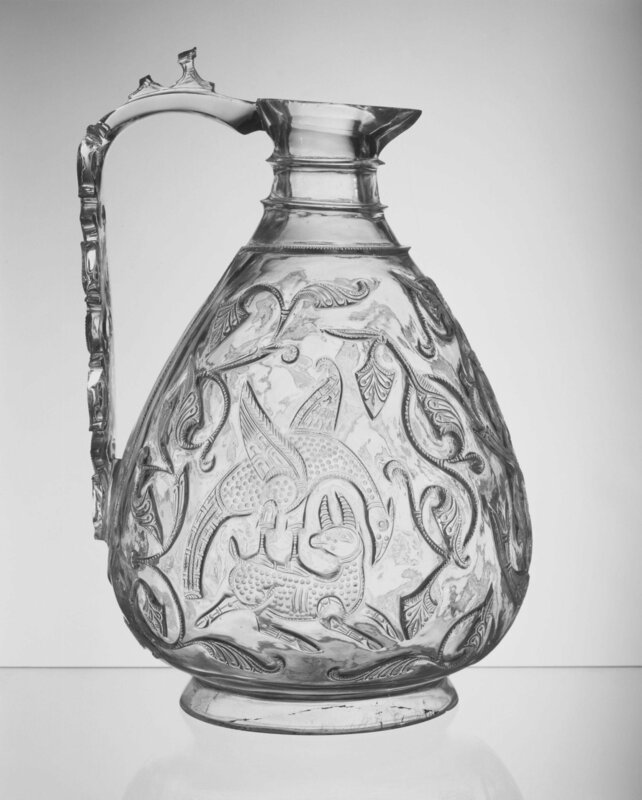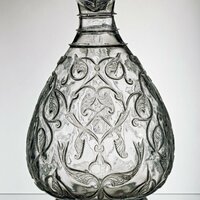Rock-crystal ewer
Type:
Ewers
Date:
First half of the eleventh century
Location or Findspot (Modern-Day Country):
Egypt
Medium:
Rock crystal
Dimensions:
Height of 19.5 cm
Description:
During the Middle Ages, Madagascar was the source of some of the largest rock crystal (clear quartz) specimens. After being traded along the ports of the Swahili Coast, it arrived in the Abbasid and Fatimid caliphates via Indian Ocean trade networks. This ewer from Fatimid Egypt was created from a single piece of rock crystal, which was drilled, cut, and carved with great technical skill. The carver hollowed out and shaped the raw material, added the exterior decoration to the thin-walled vessel, and polished the final product to enhance its transparency. The main body with relief decoration has an approximate thickness of 2 mm. The bands around the neck may originally have had mounts of precious metal to contrast with the flawless clarity of the rock crystal, its most prized feature.
In addition to the leafy palmette decoration, each side of this ewer features a bird of prey gripping the back of a gazelle- or antelope-like quadruped. This imagery may have symbolized a ruler's supremacy and ability to overcome his enemies. Several rock-crystal ewers of this type were commissioned for Fatimid rulers whose names are known from inscriptions on the ewers themselves (e.g., one in the Treasury of San Marco in Venice names the tenth-century Fatimid caliph al-'Aziz).
In addition to the leafy palmette decoration, each side of this ewer features a bird of prey gripping the back of a gazelle- or antelope-like quadruped. This imagery may have symbolized a ruler's supremacy and ability to overcome his enemies. Several rock-crystal ewers of this type were commissioned for Fatimid rulers whose names are known from inscriptions on the ewers themselves (e.g., one in the Treasury of San Marco in Venice names the tenth-century Fatimid caliph al-'Aziz).
Relevant Textbook Chapter(s):
6
Repository and Online Resources:
• This ewer is now in the Victoria and Albert Museum, London.
Image Credits:
Victoria and Albert Museum; Wikimedia Commons



